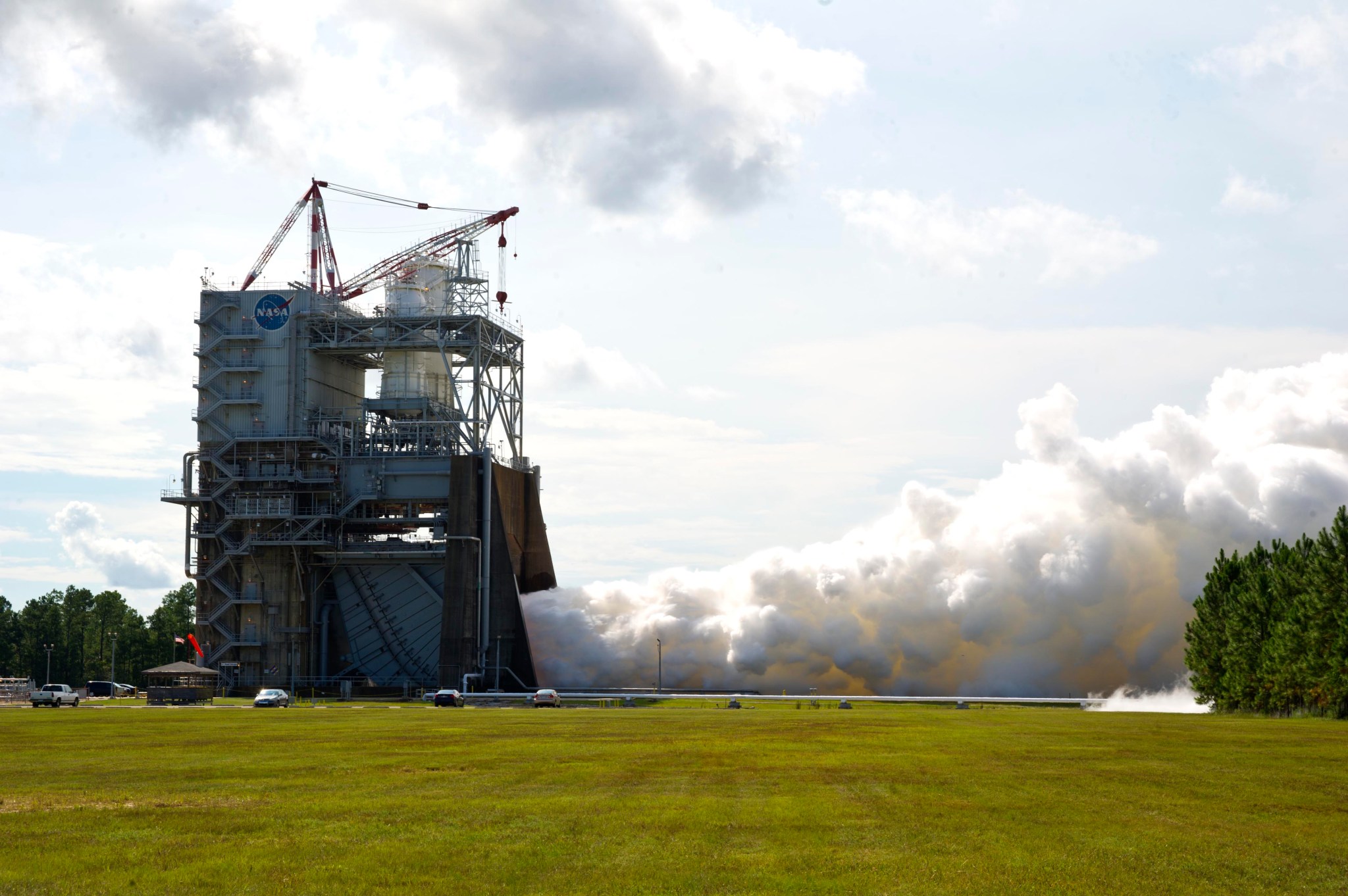All sights are set on testing RS-25 engines that will power NASA’s new Space Launch System (SLS) following completion of a series of hotfire tests on the next-generation J-2X engine Sept. 5.

NASA conducted a 330-second test fire of the J-2X rocket engine on the A-1 Test Stand at the agency’s Stennis Space Center in south Mississippi. The stand now will be prepared to house and test RS-25 engines, beginning next spring.
“The RS-25 test series is as frontline as it gets,” said Gary Benton, RS-25 test project manager at Stennis. “We will be firing the very engines that will power America’s launch of humans into deep space. It is a critical and exciting test series.”
A-1 Test Stand personnel will spend the next several months completing a long checklist of work for RS-25 testing. The first engine is set for delivery to stand in April 2014. Testing will focus on rating the former space shuttle main engines to operate at a higher propellant inlet pressure needed for NASA’s SLS.
Watch a video of the text below:
Completion of this series of J-2X testing provides valuable data and experience for the team developing SLS’ engine. Design, manufacturing and test improvements are being implemented to develop an affordable RS-25, some of which are based on knowledge gained from the J-2X test series. For example, the engine control unit to be used on the RS-25 is evolved from the J-2X controller, and engineers have tested 3-D printing of complex engine components and new materials like the liner for the Main Combustion Chamber on J-2X.
SLS is a new heavy-lift rocket capable of missions beyond low-Earth orbit, including the agency’s recently announced plans to send astronauts to study an asteroid that has been redirected into a stable lunar orbit. The rocket will provide an entirely new capability for human exploration and send humans in NASA’s Orion spacecraft into deep space. The SLS Program is being managed by Marshall Space Flight Center in Huntsville, Ala.
The just-completed J-2X test series evaluated the development engine’s gimbaling, or pivoting, to see that it moves just as it should during an actual flight to ensure proper trajectory. During the series, the engine was fired at full power and for the total time it would operate during an actual flight.
“This was a thrilling test series,” said Tom Byrd, J-2X engine lead in the SLS Liquid Engines Office at Marshall. “We saw our engine parts flex as designed during gimballing. We also collected much-needed loads data as the engine gimbaled. These were our only scheduled open-atmosphere tests, so we got to see J-2X show its bright flame, intense heat and, of course, the incredible sound that makes rocket engine testing so exciting.”
For information about NASA’s SLS Program, visit:




















